A Sparkling Tale: A Visit to Champagne
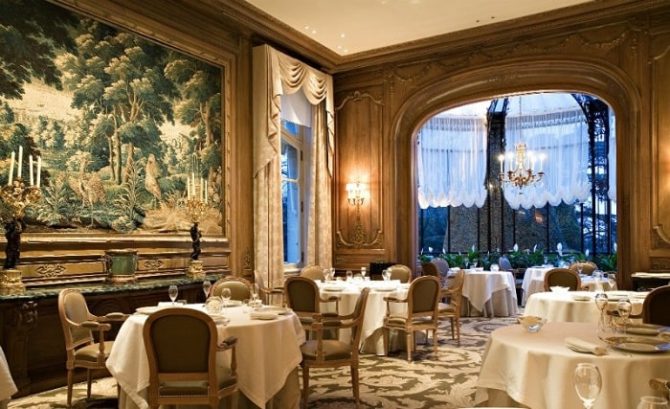
French or not, we celebrate our triumphs with champagne. But only in the region where this exceptionally fine wine is made have I ever heard of newborn babies joining in. On a flying visit to Épernay and Reims, there was one anecdote that cropped up over lunch and again over dinner with my hosts – there was a chance that something had been lost in translation the first time, so I asked them to repeat it in English. Everyone insisted that in this corner of the country, a drop of bubbly was often added to an infant’s first bottle of formula milk… some start in life! Fortunately for the rest of us wanting to develop a deeper appreciation of champagne, it is not too late. Cellar tours and talks with friendly local vignerons will help bring you up to speed.
The most famous champagne houses are spread between Épernay and Reims. Tempting as it was to visit Moët & Chandon, Perrier-Jouët and Mercier in Épernay as well as Taittinger, Veuve Clicquot and Mumm in Reims, one cellar is not wholly unlike the next. However, only Mercier has invested in a state-of-the-art laser guided train to show off the best part of its 18 kilometres of labyrinthine cellars in the allotted time. Not discounting their practical uses – namely keeping the wine chilled as it undergoes its all-important second fermentation – many of the underground vaults in Champagne have had their cool chalk walls carved with colossal frescoes. Bacchus, with his crown of vine leaves and grapes, is a popular choice as a symbol of hope that the wine will age well. There are millions of bottles down here, stacked neatly in rows, one on top of the other. They will spend at least 15 months in relative darkness – or a sufficient number of years to start gathering dust. The caves are low-lit and fairly chilly, which is why visitors are invited to dress warmly at the outset.
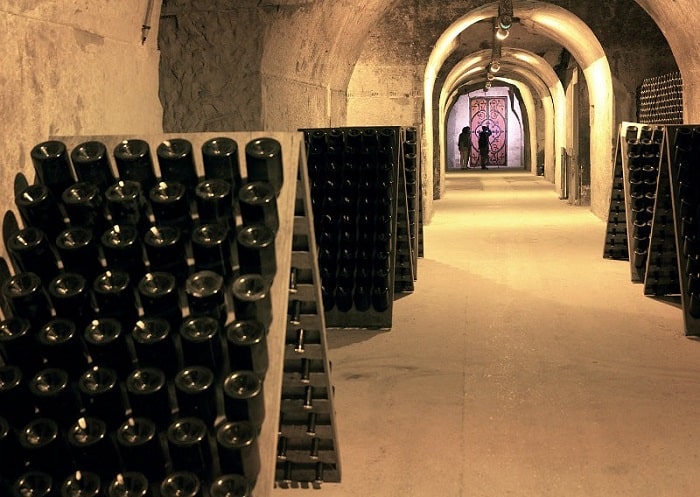
Inside the Taittinger cellars. Credit: Carmen Moya Ramirez
During the tours, audio or otherwise, some ‘champagne secrets’ will be shared and you will see how techniques like riddling have evolved. Where once it would have been the sole task of one man, le remueur, the process of turning the bottles so that the sediment settles in the neck is now mechanised in most cases. At De Castellane in Épernay, even the bottling line is on show. Moët & Chandon, on the other hand, offer visitors the chance to see inside the home of its founders, Messieurs Moët and Chandon, instead. As for the lesser-known Achille Princier, an introductory course to sabrage (the art of opening a bottle of champagne with a ceremonial sword) is available on request.
By the time a champagne tasting is suggested at the end of your cellar tour, every aspect from colour and aroma to flavour will have been covered – after all, this is a drink that deserves our full attention. It is a multi- sensory experience with no two blends the same, even when produced under one label. Weather conditions can be unpredictable, but even the way that one of these wines is served can create subtle differences when looking at the way the bubbles simply rise to the top of the glass.
Much like the Champagne name itself, which is protected by European law, the harvesting of champagne grapes is subject to strict controls. It starts between the end of August and late October each year and once the harvest is underway, all the grapes must be collected within a window of about ten days. Mechanical harvesting is forbidden, so the grapes are hand-picked, which is why growers such as Champagne Abel Jobart between Épernay and Reims promote ‘harvest experience days’ for groups or individuals who really want to get involved. Other growers will be too busy with the secateurs themselves to welcome any visitors during this season. The best time to visit a vineyard is when the vines still have their leaves; between the months of November and March/April, the woody vines are being pruned, but they still have their charm.
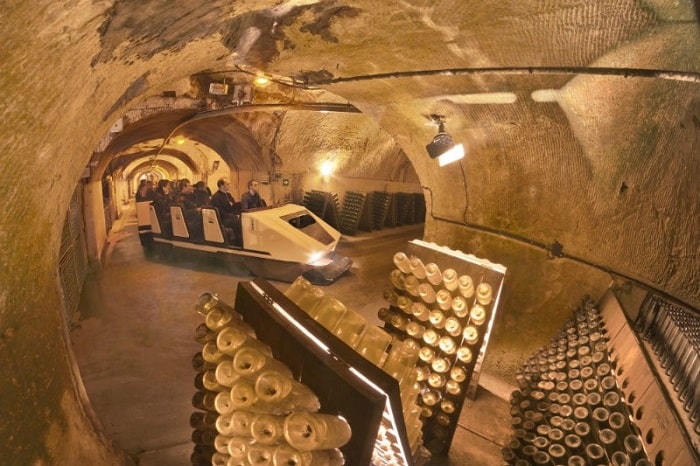
State-of-the-art tour at Mercier. Credit: S Compoint
A Dose of Culture
Of course no trip to Champagne would be complete without venturing into Reims and Épernay for more cultural highlights. One of the main attractions in Reims is the UNESCO-listed cathedral, Notre-Dame de Reims, inside which the stained glass windows show scenes of Romans treading grapes and Dom Pérignon turning still wine to sparkling, alongside colourful representations of neighbouring Champagne villages. At the far end, behind the altar, is another striking set in vivid blue – the work of Marc Chagall. The golden fleur-de-lys decorations on the roof are testament to the royal coronations held here over the centuries, each followed by a banquet where the champagne flowed. Some of Reims’ oldest architecture dates from Gallo–Roman times and the city centre underground galleries (le cryptoportique) are a perfect example. The occasional exhibition is held here, but above ground in The Forum, free concerts provide the perfect excuse to linger after dinner in the summer months.
Over in Épernay, Les Habits de Lumière is an annual event on Avenue de Champagne, home to Moët & Chandon et al. Held over the course of a long weekend in December, makeshift Champagne bars are set up in the street and visitors are treated to live music, street theatre and a spectacular son et lumière in addition to a fireworks display, a vintage car parade and Les Habits de Saveurs food market and cookery demonstrations.
At any time of the year, you will find a plethora of restaurants offering a tasting menu, combining a glass of champagne with a few local delicacies. Some of the most famous products from the area include jambon de Reims (a ham terrine), Langres and Chaource (both unpasteurised cow’s milk cheeses), biscuits roses de Reims (pink biscuits to dip in champagne) and chocolates filled with Marc de Champagne and shaped like corks or bubbles. The Café du Palais in Reims has a Formule Champenoise incorporating most of these. As the locals will soon have you persuaded, champagne can be sipped alongside your starter, main course, and dessert… unless you wish to substitute it with Champagne’s only red wine, Côteaux Champenois.
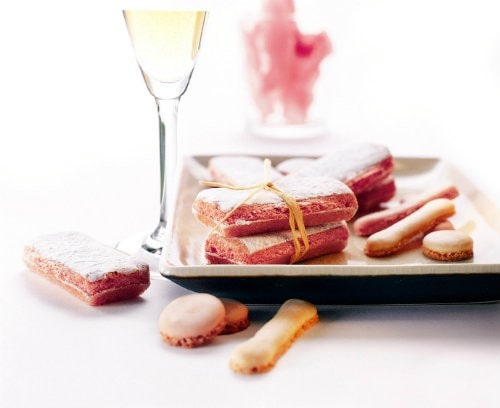
Les Biscuits Rose de Reims. Credit: Maison Fossier
More to Explore
A great place to put your newly acquired champagne tasting knowledge to good practice is C Comme in Épernay, a bar owned by the ebullient Frédéric Dricot. He has sourced more than 350 Champagnes from 50 local winegrowers and sees it as his job to help you find your favourite. “Il n’y a pas un champagne, il y a du champagne,” he told me – and the difference between them is never more obvious than when you are presented with six samples to compare. Every week, Frédéric compiles a taster menu illustrated with photos of the families or couples behind these little labels. In the basement is a free exhibition on the subject of champagne with models and displays on everything from the soil used to grow the grapes to the thick glass bottles designed specifically for sparkling wine.
Thanks to high speed trains, Reims is just 45 minutes from Paris by TGV, making the Marne a popular choice for a day trip from the French capital. In the space of an afternoon, it is possible to visit a champagne house, take a leisurely drive through the vineyards – if there are tractors on the road, you will not be going anywhere fast – and sample local specialities. However, there are some seriously luxurious hotels in which to spend the night before returning refreshed to the city next morning. Hostellerie La Briqueterie in Vinay is a five-star establishment which offers champagne discovery tours. Five-star Les Crayères in Reims has a Dom Pérignon break, which includes a Moët & Chandon cellar visit and a walk around the vineyards, in addition to a one-night stay in one of its Princesse bedrooms.
Further Afield
As visitors to this part of the country will want to taste the fruits of the vineyards around them, a driver is essential. Private chauffeur driven tours and mini-bus tours for small groups are easily arranged. However, wine connoisseurs may choose to combine a trip to Champagne with a visit to the other wine growing areas of France, including: Burgundy, Alsace and the Loire Valley. Alternatively, Reveille Battlefield Tours run Bubbles & Battlefields tours with a focus on the American presence in Champagne in WWI and the smaller champagne houses. Another way to see Champagne like never before is from a hot air balloon. France Montgolfières launch their balloons from Park Pommery in Reims before setting off across the flat fields to the chalk hills where the vines are planted. One thing is for sure – there will be no babies on board.
CHAMPAGNE ESSENTIAL GUIDE
Champagne Houses
Champagne Mercier (68-70 Avenue de Champagne, Épernay); Champagne Abel Jobart (4 Rue de la Sous-Prefecture, Sarcy); Champagne Achille Princier (48 Rue de la Chapelle, Cerseuil)
Where to Eat & Drink
Le Café du Palais (14 Place Myron Herrick, Reims); C Comme (8 Rue Gambetta; Épernay)
Where to Stay
Les Crayères (64 Boulevard Henry Vasnier, Reims); Hostellerie La Briqueterie (4 Route de Sezanne, Vinay)
Fast facts: Champagne is a 330 million bottles a year business. Every two seconds worldwide, a bottle of Champagne is opened. The U.S. is the second largest export market for Champagne, behind the U.K. Champagne bottles are named after biblical kings: Jeroboam (four bottles) and Nebuchadnezzar (20 bottles). At 170 years old, the world’s oldest bottle of drinkable Champagne, made by Veuve Clicquot, was sold in 2011 for 30,000 euros. It was rescued from a shipwreck in the Baltic Sea in 2010.
From the France Today archives
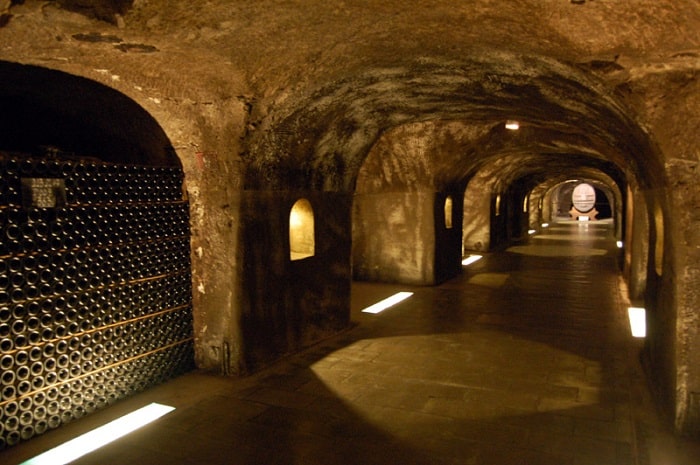
Epernay Champagne Moet Chandon Cave. Credit: giulio nepi, Wikimedia (CC BY 2.0)
Share to: Facebook Twitter LinkedIn Email
Leave a reply
Your email address will not be published. Required fields are marked *


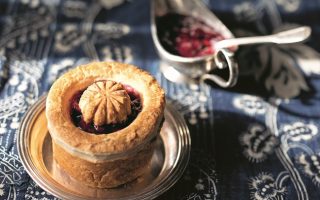
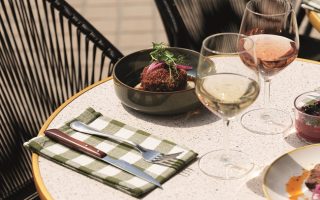
REPLY
REPLY
REPLY